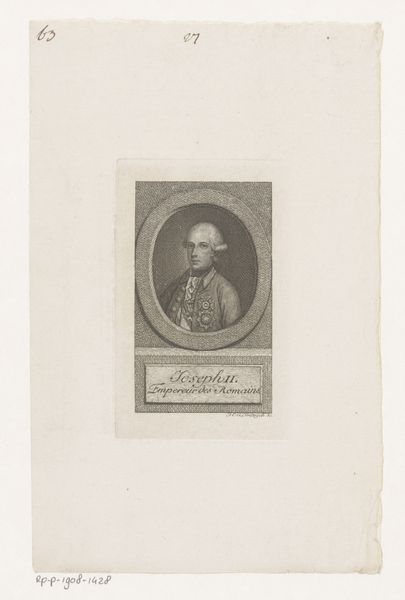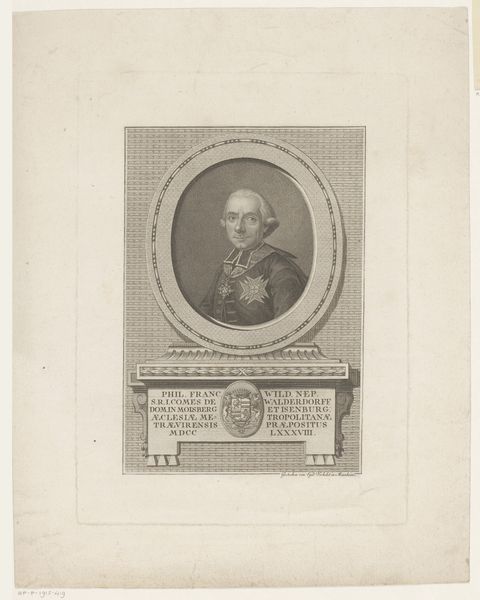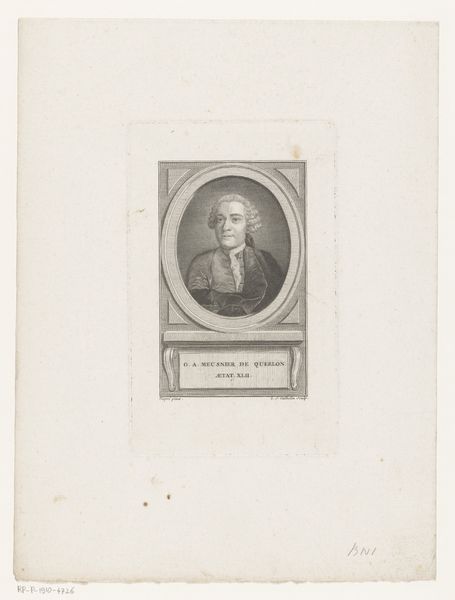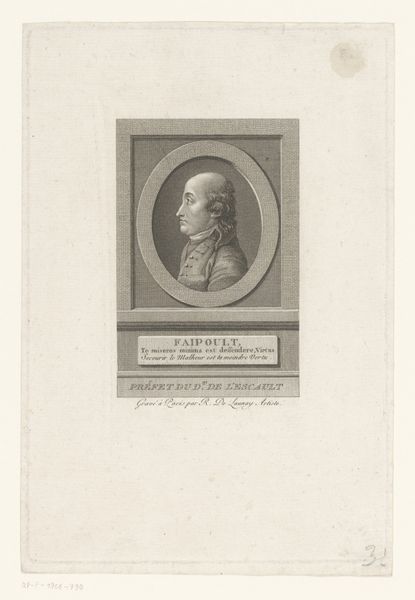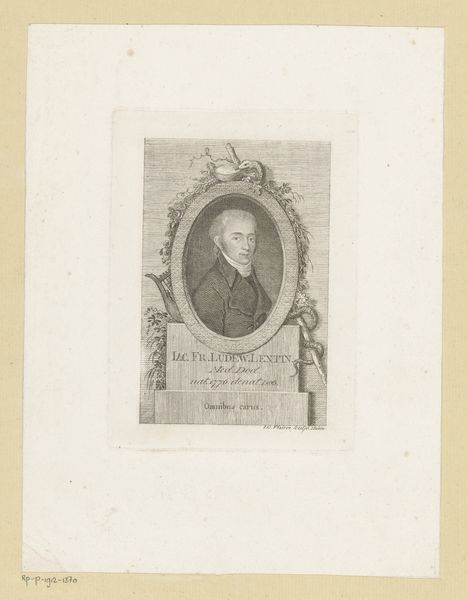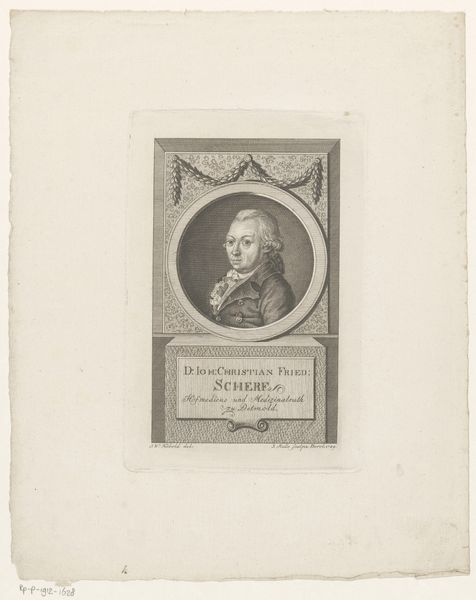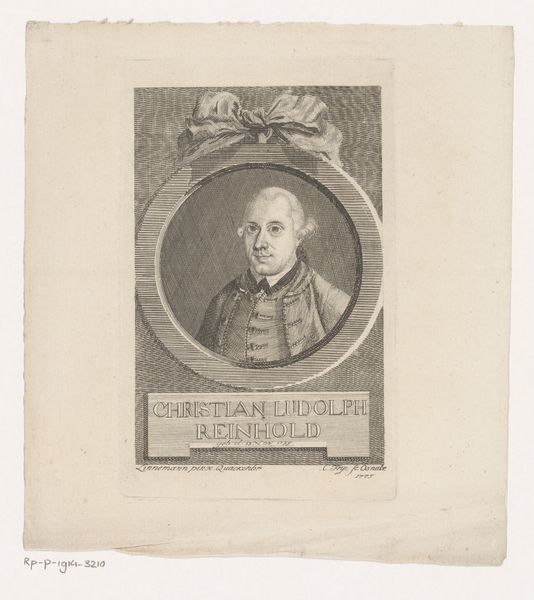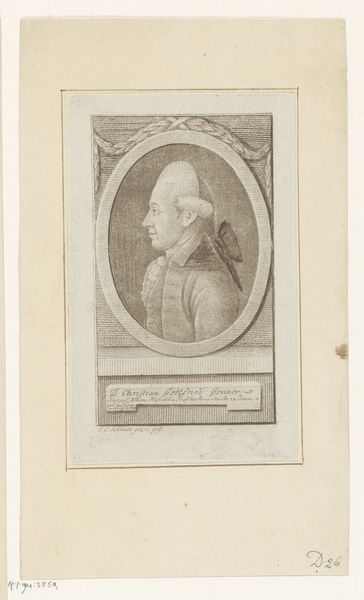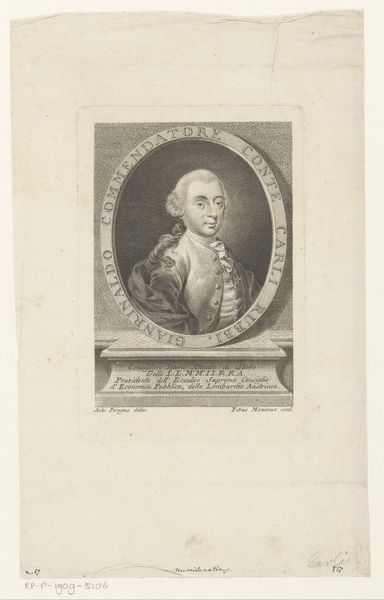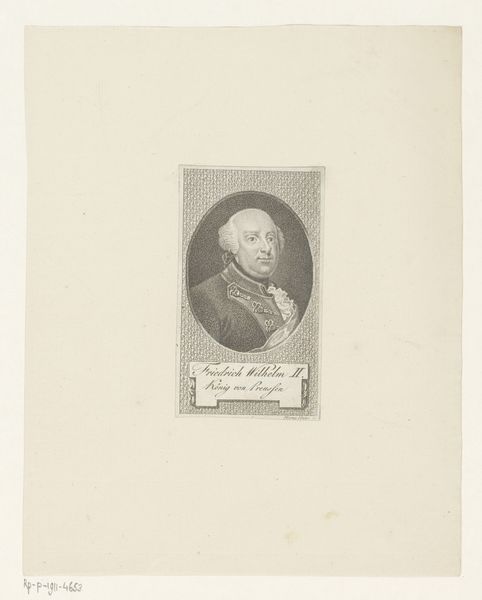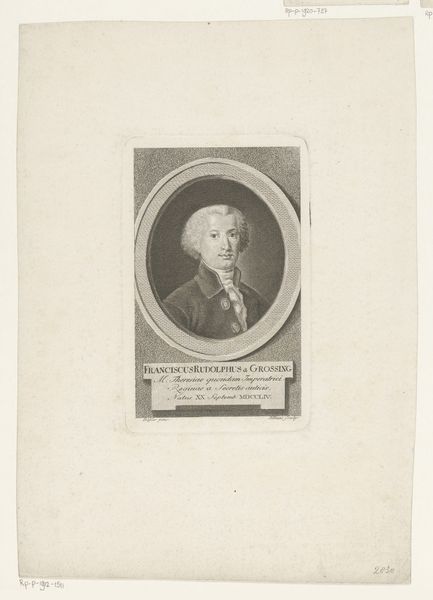
print, engraving
#
portrait
#
neoclacissism
# print
#
history-painting
#
engraving
Dimensions: height 130 mm, width 63 mm
Copyright: Rijks Museum: Open Domain
Curator: This is a print made by Daniel Nikolaus Chodowiecki. The work, aptly titled, is "Portret van Frederik de Grote," dating sometime between 1736 and 1801. It resides here in the Rijksmuseum. My first thought: Neoclassical rigidity. It is so neat and orderly, isn’t it? Editor: That's certainly one way to put it. It evokes that feeling, that precise era in European history... but for me, there’s also a somber tone. That sharp etching style really does highlight the... I guess you could call it the "burden of rulership" etched into his face. Curator: Burden of rulership. Yes, perhaps. Or the quiet determination to leave a mark on the world that seems to weigh so heavily. Do you think that this formal portrait speaks more about the historical construction of powerful individuals rather than some genuine likeness, wouldn’t you say? Editor: Definitely. Frederick the Great’s image became synonymous with a strong centralized state, which benefited elites over the labor of the proletariat class, to be honest. I mean, even this seemingly neutral neoclassical setting, down to the wreath motif and carefully chosen inscription, creates a narrative around a ruler. Think how prints such as this could have solidified a collective idea surrounding political power? Curator: So you think of the image as…propaganda? Editor: I would not describe it that harshly. However, It invites viewers into that particular historical understanding of sovereignty. I mean, in ways both explicit and subtle! This piece shows not only the subject but also all the cultural and ideological trappings that bolstered his reign. Curator: That’s intriguing, because while you see how social position dictates this rigid form of portraiture, it does let us pause and ask: who were these people at the mercy of power? To those people that did have social agency, what drove their choices to engage? Editor: It allows us to contextualize them. It becomes an exploration, questioning and seeing them beyond just icons of art.
Comments
No comments
Be the first to comment and join the conversation on the ultimate creative platform.
